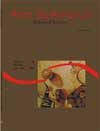Fish assemblages in littoral areas of the upper Paraná river floodplain, Brazil
Abstract
Fish assemblages in littoral areas of rivers (Baía and Paraná) and lagoons (Figueira, Genipapo and Pousada) on the upper Paraná river floodplain were evaluated in their composition, length structure, abundance and species dominance and diversity patterns. Samplings were carried out in March 1999, with single (for the rivers) and triple (for the lagoons) 5mm-mesh seine nets. Results amounted to the catch of 10,517 individuals belonging to 51 species. There were significant differences between the mean standard lengths of the assemblages in the different environments. Pousada lagoon registered high density in number of fish, as well as a high α-diversity value, whereas in Figueira lagoon a high biomass per unit of area was registered. The most abundant species in these environments were Cheirodon notomelas (Eigenmann, 1915) (Baía and Figueira), Bryconamericus stramineus Eigenmann, 1908 (Paraná), Steindachnerina insculpta (Fernándes-Yépez, 1948) (Genipapo) and Moenkhausia intermedia Eigenmann, 1908 (Pousada). There were few similarities between the littoral zones of the lagoons due to the pattern of connectivity of the environments and to the abrupt interruption of the floodplain pulse in the 1998/1999 hydrologic cycle. This interruption was caused by the closure of the Porto Primavera Hydroelectric Plant. Lagoons became more differentiated and their heterogeneity increasedDownloads
Download data is not yet available.
Published
2008-05-09
How to Cite
Oliveira, E. F. de, Luiz, E. A., Agostinho, A. A., & Cecilio, E. B. (2008). Fish assemblages in littoral areas of the upper Paraná river floodplain, Brazil. Acta Scientiarum. Biological Sciences, 23, 369-376. https://doi.org/10.4025/actascibiolsci.v23i0.2691
Issue
Section
Biology Sciences
DECLARATION OF ORIGINALITY AND COPYRIGHTS
I Declare that current article is original and has not been submitted for publication, in part or in whole, to any other national or international journal.
The copyrights belong exclusively to the authors. Published content is licensed under Creative Commons Attribution 4.0 (CC BY 4.0) guidelines, which allows sharing (copy and distribution of the material in any medium or format) and adaptation (remix, transform, and build upon the material) for any purpose, even commercially, under the terms of attribution.
Read this link for further information on how to use CC BY 4.0 properly.
0.6
2019CiteScore
31st percentile
Powered by 

0.6
2019CiteScore
31st percentile
Powered by 











1.png)




3.png)













